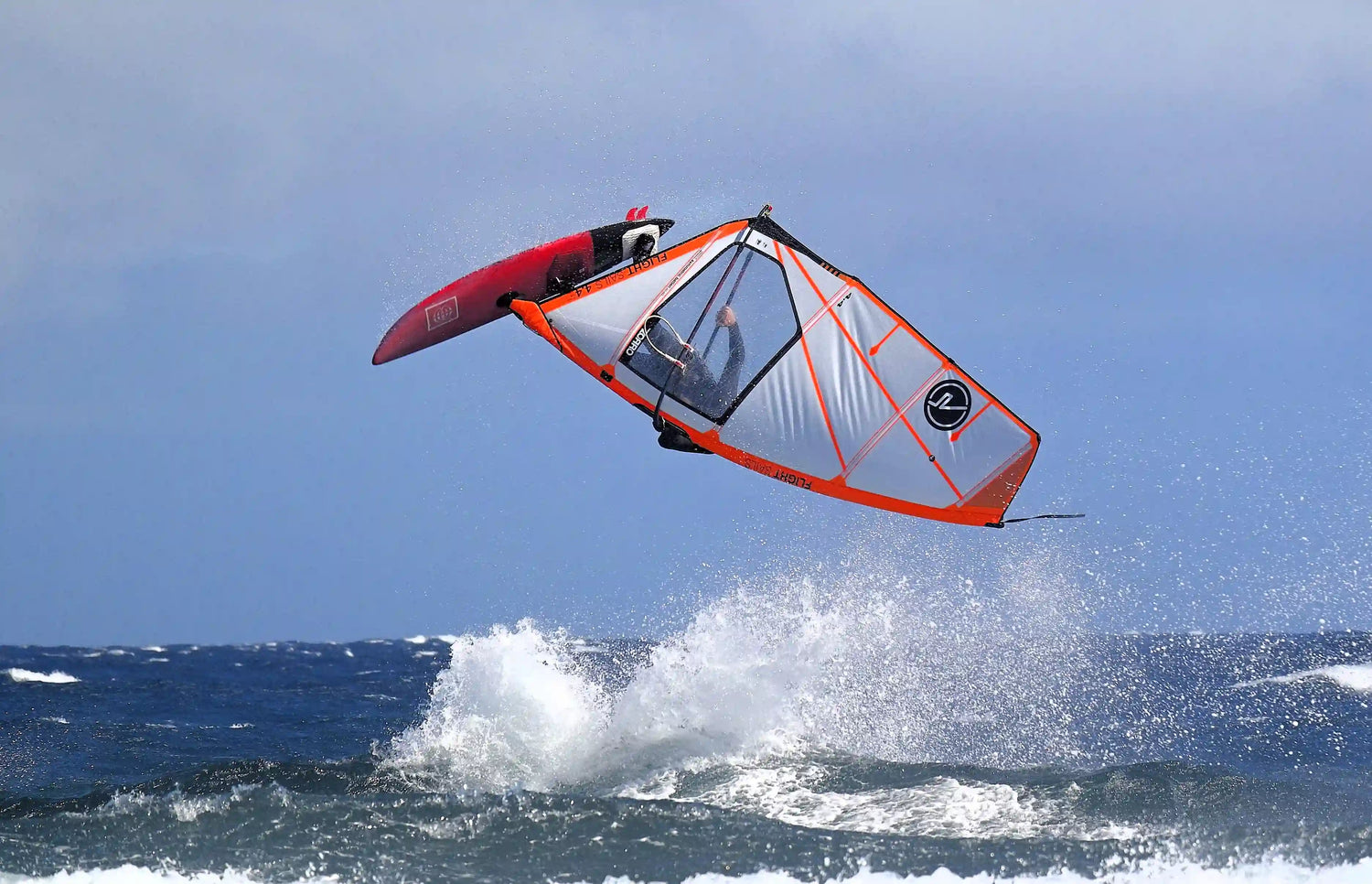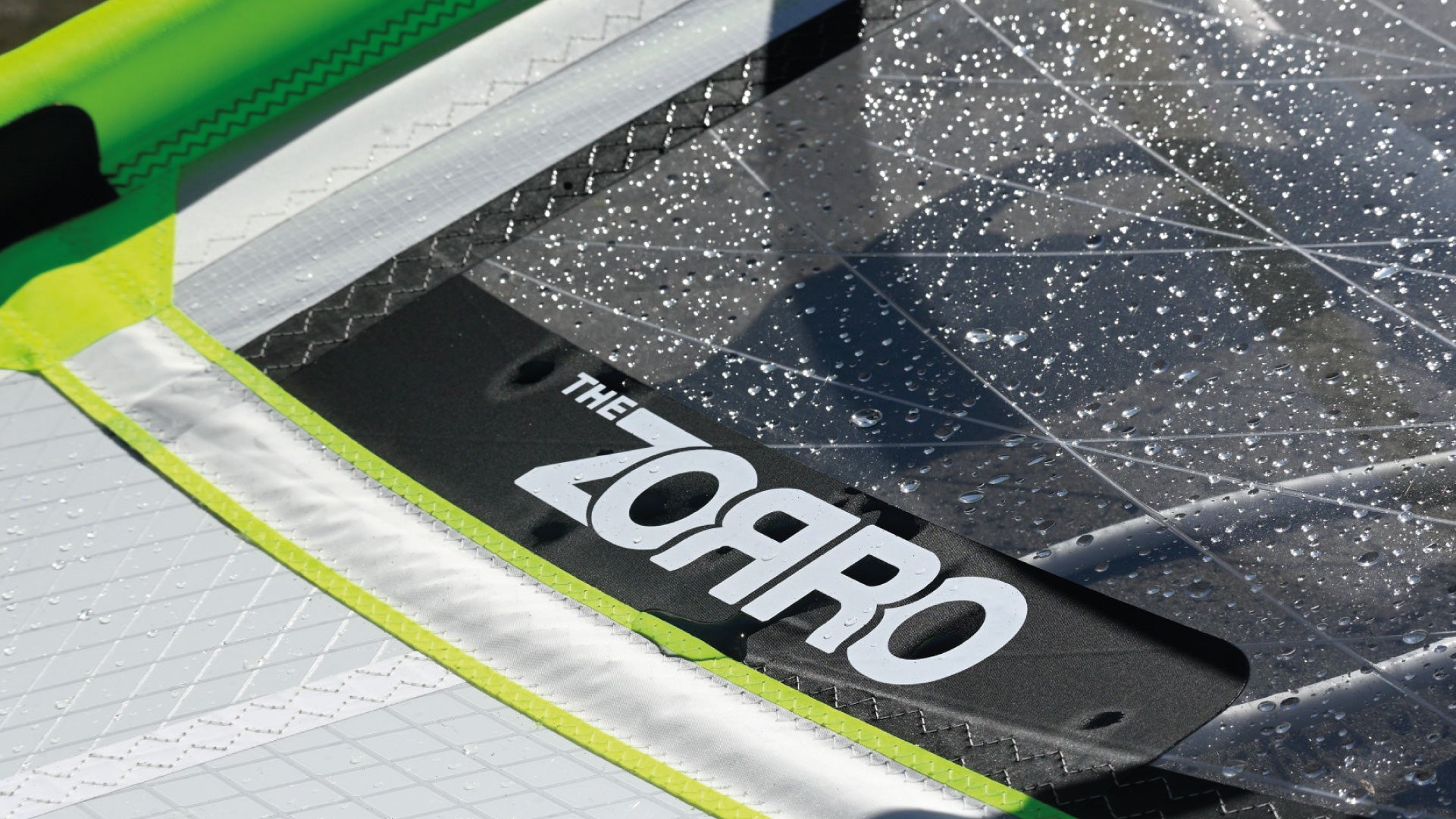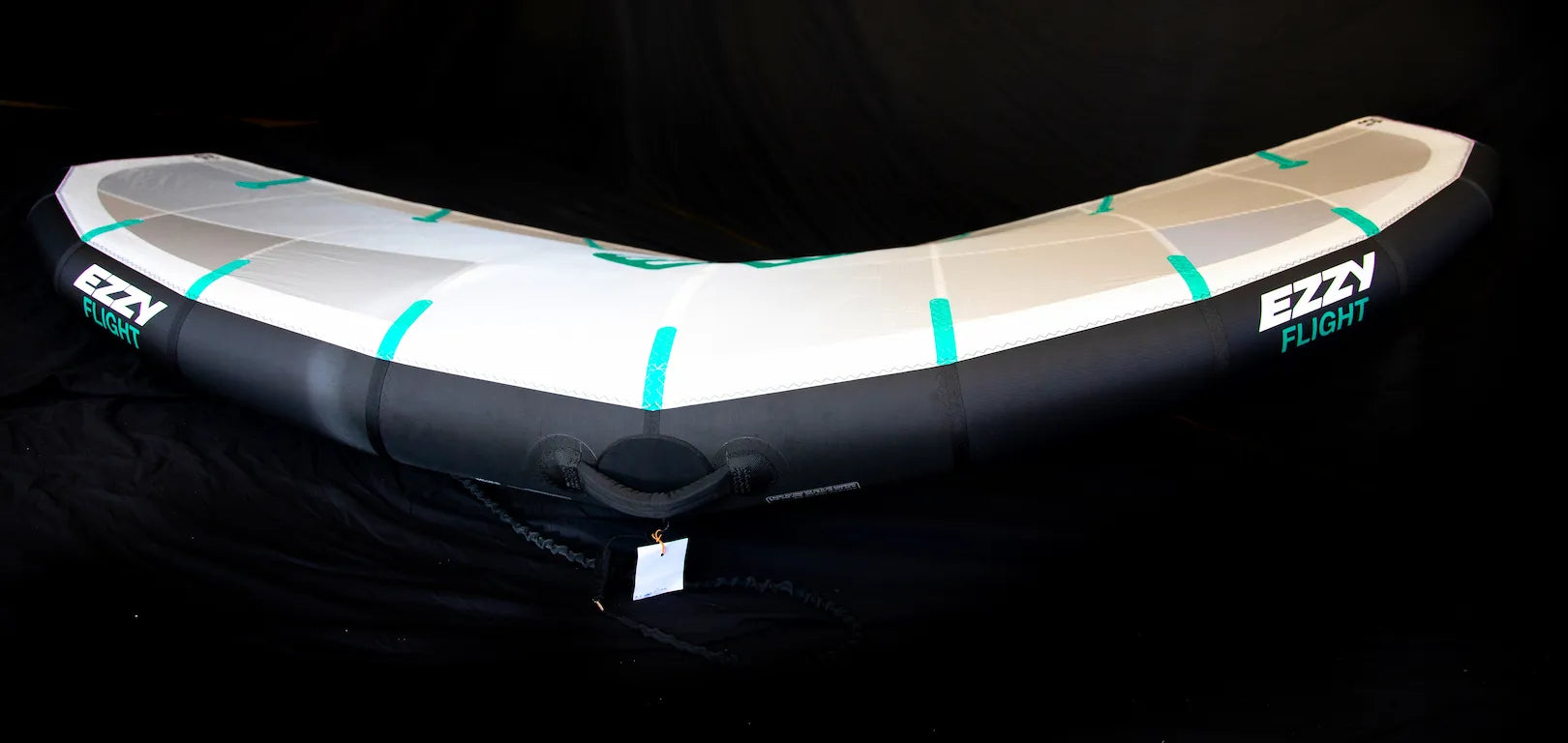Introduction
The design of a windsurfing sail is not just about aerodynamics and materials, it’s about how the loads are distributed across the structure. At Flight Sails, we take a meticulous approach to panel alignment, ensuring we maximize the mechanical properties of our materials. This results in a sail that delivers optimal performance in the water while maintaining long-term durability.
One of the key aspects of our construction is the use of stretch charts for every material. This allows us to align the panels in the direction that best resists stress, preventing deformation and ensuring the sail retains its shape under all conditions.

Advanced Construction: Strategic Panel Alignment
Every material in our sail behaves differently under load, which is why we don’t cut panels the standard way.
- Stretch Analysis: Each material we use X-Ply and Scrims has specific resistance properties depending on the direction of applied force. We analyze stretch charts to determine the optimal orientation for each section of the sail.
- Precise Panel Alignment: Instead of cutting fabric to minimize waste, we strategically align every panel to handle load distribution in the most efficient way possible. This ensures superior structural integrity.
- Higher Material Consumption, Superior Performance: This construction method requires more fabric per sail, but the result is better load distribution, maximizing the material’s properties for increased durability and stability.
The result? A sail that does not deform over time, keeping its original profile session after session, which is crucial for maintaining peak performance.
Materials: Why We Don’t Use Monofilm
Unlike many sails on the market, at Flight Sails, we do not use Monofilm. Instead, we rely on X-Ply and Scrims, which provide superior strength without compromising flexibility.
- X-Ply in structural load areas: Enhances impact resistance and prevents long-term stretching under continuous pressure.
- Scrims in key panels: Keeps the sail lightweight while allowing controlled elasticity for smoother power delivery.
- Reinforcements in the luff and clew: Effectively distributes the forces generated by battens and mast flex, reducing material fatigue over time.
These materials, combined with our optimized panel orientation, result in sails with exceptional durability and precise load distribution, something that simply cannot be achieved with traditional cutting methods.
Aerodynamics and Profile Control
Our 4-batten wave sail is designed for maximum responsiveness and stability, featuring:
- Progressive twist: The leech releases pressure efficiently in gusts without sacrificing acceleration.
- Optimized tension distribution: Prevents the sail from collapsing in light winds while maintaining control in overpowered conditions.
- Controlled flexibility: The sail reacts predictably to varying loads, ensuring smooth and powerful maneuvers.
This balance ensures that the sail remains stable and responsive across a wide range of conditions, from clean down-the-line waves to strong onshore wind scenarios.
Development & Testing: From Theory to Reality
Each sail undergoes a rigorous development process to refine every detail:
- Advanced digital simulation: Before producing a prototype, we run structural load analyses to fine-tune tension distribution and panel orientation.
- Real-world testing with experienced riders: We evaluate the sail’s performance in a variety of conditions to ensure it behaves exactly as designed.
- Iterative refinements: Based on feedback from our test riders, we make adjustments to achieve the perfect balance of power, control, and stability.
This process guarantees that every Flight Sails model delivers a perfectly calculated load distribution, maximizing efficiency without compromising durability.
Conclusion
Windsurf sail design goes beyond just shape, it’s about how forces are distributed and absorbed. At Flight Sails, our 4-batten wave sail is engineered to provide the ideal combination of control, stability, and long-term durability.
By utilizing stretch charts and optimizing panel alignment, we ensure that every sail maintains its shape over time, delivering consistent performance even after extensive use.
📩 Want to learn more about our technology or test one of our sails? Get in touch with us!






